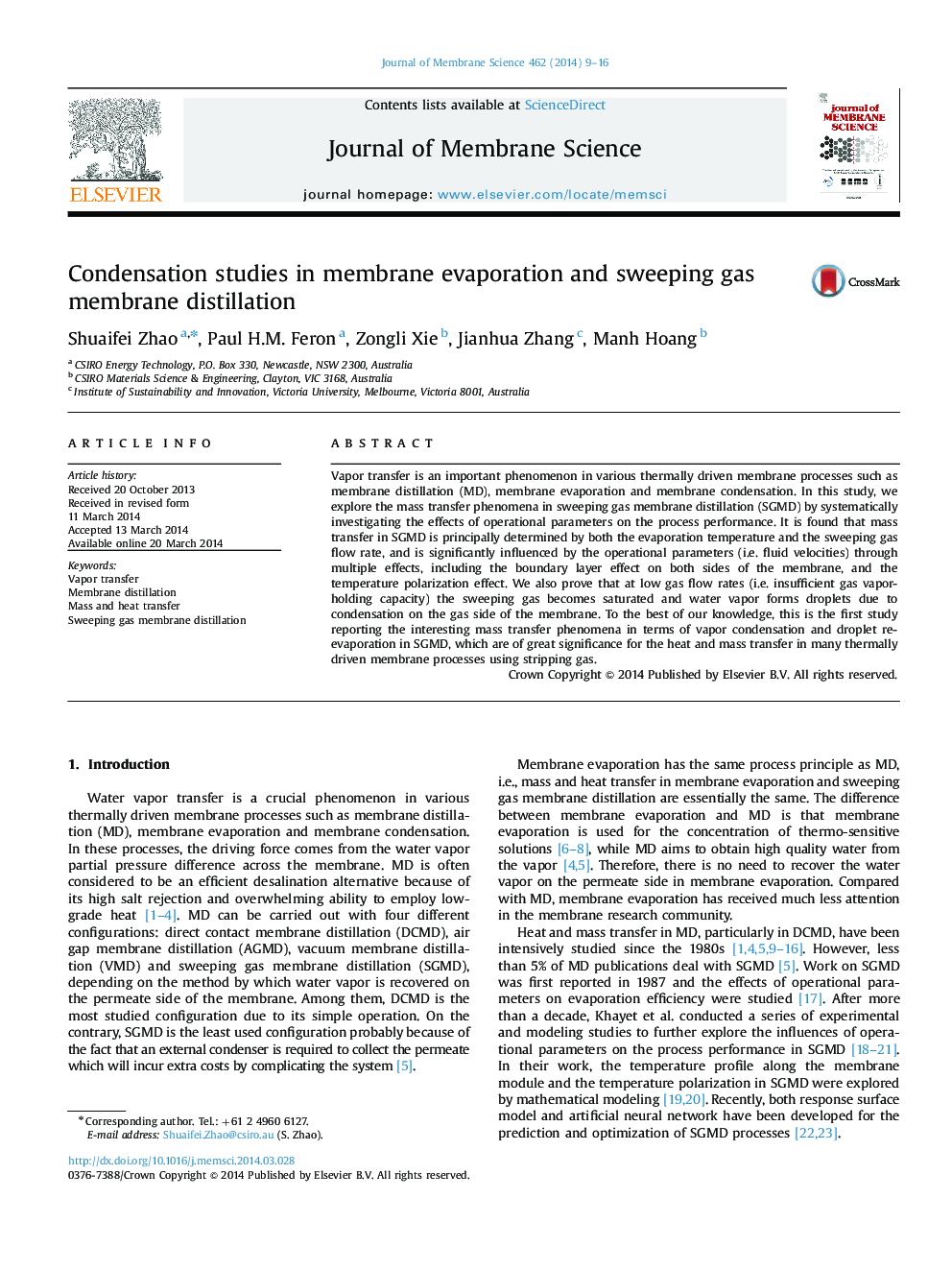| Article ID | Journal | Published Year | Pages | File Type |
|---|---|---|---|---|
| 633617 | Journal of Membrane Science | 2014 | 8 Pages |
•Mass transfer phenomena in SGMD were explored.•Boundary layers on both sides of the membrane affect mass transfer.•Higher gas flow rate causes higher vapor-holding capacity of the gas and higher flux.•Higher gas flow rate causes lower vapor pressure of the gas and higher flux.•Vapor condensation occurs on the gas side in SGMD.
Vapor transfer is an important phenomenon in various thermally driven membrane processes such as membrane distillation (MD), membrane evaporation and membrane condensation. In this study, we explore the mass transfer phenomena in sweeping gas membrane distillation (SGMD) by systematically investigating the effects of operational parameters on the process performance. It is found that mass transfer in SGMD is principally determined by both the evaporation temperature and the sweeping gas flow rate, and is significantly influenced by the operational parameters (i.e. fluid velocities) through multiple effects, including the boundary layer effect on both sides of the membrane, and the temperature polarization effect. We also prove that at low gas flow rates (i.e. insufficient gas vapor-holding capacity) the sweeping gas becomes saturated and water vapor forms droplets due to condensation on the gas side of the membrane. To the best of our knowledge, this is the first study reporting the interesting mass transfer phenomena in terms of vapor condensation and droplet re-evaporation in SGMD, which are of great significance for the heat and mass transfer in many thermally driven membrane processes using stripping gas.
Graphical abstractFigure optionsDownload full-size imageDownload high-quality image (212 K)Download as PowerPoint slide
